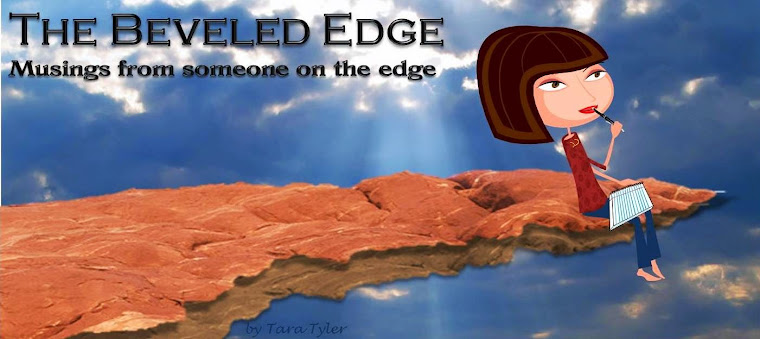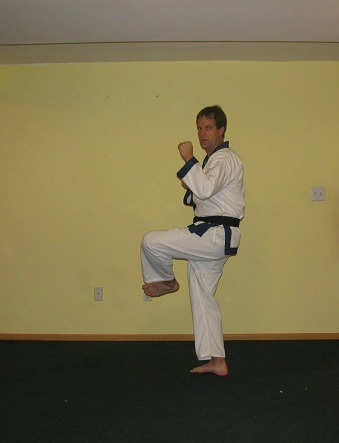 Z is for Zi Lyang
Z is for Zi LyangZi Lyang means Mass and is important to consider when it comes to power of technique. Newton teaches us that the force one exerts on an object (in this case an attacker) is equal to one's mass multiplied by one's acceleration. What this means in practical application is that it's important to exert one's mass in the direction of the attack in order to have the greatest impact.
The chamber (as I've already discussed) has a lot to do with setting up the attack- the leg being at the same height as the desired kick, turning the hips over in the same direction as the kick, unfolding the technique on a straight line. The other key is mental- the idea is to take space.
 "My space!"
"My space!" Note the arm locks after the point of impact
Note the arm locks after the point of impactAnd when we do our forms we transition from one move to the next with controlled steps so that we translate our mass through on a straight line.
You don't have to be a huge person with a lot of mass in order to be powerful (though I'll admit that my friends who are over six feet tall and made of muscle are damned powerful); you simply have to know how to throw your weight around, as the expression goes. Jet Li is only 5'6". Bruce Lee was 5'7". Jackie Chan is 5'9". And even the tall American Chuck Norris is only 5'10". There's not a one of them who wasn't/isn't incredibly powerful- because they know how to use their mass.
Well, that's it for my A to Z! I hope you all enjoyed learning a bit more about my favorite past time as I certainly enjoyed teaching you. Doing the research for all the posts this month has done just what I hoped it would do: psyched me up for my Dan test coming up in June. I'm looking forward to having the best test I've ever had and if you're interested I invite you to stop by sometime around the 22nd to hear from an exhausted and elated me.
I still have quite a lot of bloggers to visit and if you're catching up like me make sure you leave a comment so I know how to find you. Otherwise, I will make my way down the list and visit all the lovely folks I missed over the course of the month- one blogger at a time.
Thanks for everything you've done this month- and happy A to Z!




 Note the down- pointed toes and turned base foot.
Note the down- pointed toes and turned base foot.






 And now it's time again to celebrate Friday with our friend
And now it's time again to celebrate Friday with our friend 















